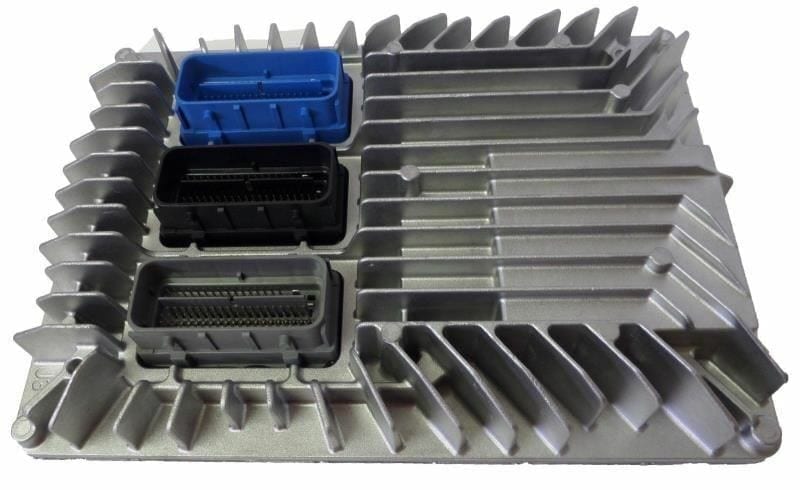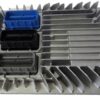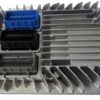Restore Peak Performance to Your Vehicle with a Reliable, Pre-Programmed ECM
Is your SAAB 9-5, or another compatible GM vehicle, suffering from frustrating and unpredictable issues? A flashing check engine light that won’t go away, sudden stalling, rough idling, or a complete no-start condition can often be traced back to a single, critical component: the Engine Control Module (ECM). As a technician with over two decades of experience under the hood, I’ve seen firsthand how a failing ECM can mimic a dozen other problems, leading to expensive and incorrect repairs. This isn’t just a part; it’s the brain of your engine, and when it falters, your vehicle’s reliability is compromised.
This isn’t a generic, one-size-fits-all module. We offer a true plug-and-play solution. Upon purchase, you provide us with your vehicle’s VIN, and we program this ECM with the latest GM-certified software specific to your car. This critical step ensures all systems—from fuel delivery and ignition timing to transmission shifting and emissions controls—operate exactly as the manufacturer intended. You get a dependable fix that restores original performance and efficiency, all without the costly trip to a dealership for programming.
Is Your Vehicle Showing These Common ECM Failure Signs?
- ✔ Persistent Check Engine Light: Often with internal processor codes like P0601, P0606, or communication codes like U0100.
- ✔ Engine Stalling or Misfiring: The engine may cut out unexpectedly while driving or run rough, especially under load.
- ✔ No-Start Condition: The engine cranks but refuses to start, even with a good battery and starter.
- ✔ Poor Fuel Economy: A faulty ECM can’t properly manage the air-fuel mixture, leading to a noticeable drop in MPG.
- ✔ Erratic Automatic Transmission Shifting: The ECM works with the TCM (Transmission Control Module), and a failure can cause harsh or delayed shifts.
- ✔ Performance and Power Loss: Your vehicle may feel sluggish and unresponsive.
A Technician’s Notebook: The Intermittent Stall That Fooled Everyone
A customer brought in a 2012 Chevy Impala that would stall randomly at stoplights. They’d already replaced the fuel pump and crankshaft position sensor at another shop, with no success. The car threw no consistent codes, making it a diagnostic nightmare. In my bay, I hooked up my professional scan tool and monitored live data. I noticed the 5-volt reference signal to several key sensors would momentarily drop out just before a stall. This is a classic, yet often overlooked, sign of an internal ECM failure. The module’s internal voltage regulator was failing under heat soak. We sourced a VIN-programmed ECM just like this one, installed it in under 30 minutes, and the problem was solved for good. It saved the customer from more guesswork and unnecessary parts.
A Straightforward Guide to Installation
Installing your new 2010-2011 SAAB 9-5 ECM is a simple process that most DIYers can handle. Since it arrives pre-programmed, no special tools are required.
- Safety First: Always disconnect the negative terminal from your vehicle’s battery and secure it away from the post to prevent accidental contact.
- Locate the ECM: On most compatible models, the ECM is found in the engine bay, typically on the driver’s side (LH side) mounted near the fuse box or on the air cleaner housing. Refer to your vehicle’s service manual for the exact location.
- Disconnect the Connectors: Carefully release the locking tabs on the wiring harness connectors and pull them straight out from the module. Never force them. Inspect the connectors for any corrosion or damage.
- Remove the Old Module: Unbolt the old ECM from its mounting bracket. There are usually two or three bolts holding it in place.
- Install the New ECM: Mount your new, pre-programmed ECM onto the bracket and secure it with the original bolts.
- Reconnect Everything: Firmly plug the wiring harnesses back into the new module until they click into place. Reconnect the negative battery terminal.
- Final Check: Start the vehicle. The check engine light may stay on for a short period as the computer completes its self-checks. A short drive cycle is often all that’s needed for it to clear.
Verified Vehicle Compatibility
This Engine Control Module is a direct replacement for part number 12642665 and interchanges with part numbers 12616889, 12630908, 12637106, 12650256, and 12651993. It is guaranteed to fit the following vehicles:
- 2010-2011 SAAB 9-5 (2.0L, ID 12642665)
- 2012 Buick Allure (2.4L, 3.0L)
- 2010-2011 Buick LaCrosse (2.4L, 3.0L)
- 2011 Buick Regal
- 2012 Cadillac CTS (3.0L, 3.6L)
- 2010-2011 Cadillac SRX (3.0L)
- 2012 Chevrolet Camaro (3.6L)
- 2012 Chevrolet Captiva Sport
- 2012 Chevrolet Impala
- 2010-2011 Chevrolet Equinox
- 2012-2013 Chevrolet Orlando
- 2010-2011 GMC Terrain
Note: Please provide your VIN upon checkout to ensure we send you a perfectly matched and programmed module for your specific vehicle.
Frequently Asked Questions
Frequently Asked Questions
What is an ECM and what does it do?
The Engine Control Module (ECM), or engine computer, is the central processor that controls your engine’s functions. It manages the fuel injectors, spark plugs, and throttle position to ensure optimal performance, fuel economy, and emissions.
Do I need to get this module programmed by a dealer?
No. This is the biggest benefit of our service. We program the module to your vehicle’s specific VIN before shipping it. It arrives ready to install, saving you hundreds of dollars in dealer programming fees.
How do I provide my VIN?
After you complete your purchase, you will need to send us your 17-digit Vehicle Identification Number (VIN). We cannot ship your order until we receive it for programming.
Is this a difficult part to replace for a DIYer?
For most vehicles this part fits, the replacement is straightforward. It typically involves disconnecting the battery, unplugging a few connectors, and unbolting the module. No special tools are needed, making it a great job for a home mechanic.
Will this fix my check engine light?
If the check engine light is caused by an internal ECM failure (like codes P0601-P0606), then yes, this module will resolve the issue. It’s always best to have the codes professionally diagnosed to confirm the ECM is the root cause before ordering.
What if my old part number is different but on your list?
GM often uses several part numbers for the same component. If your original part number is on our interchange list (e.g., 12630908, 12650256), this module is the correct, updated replacement for your vehicle.



